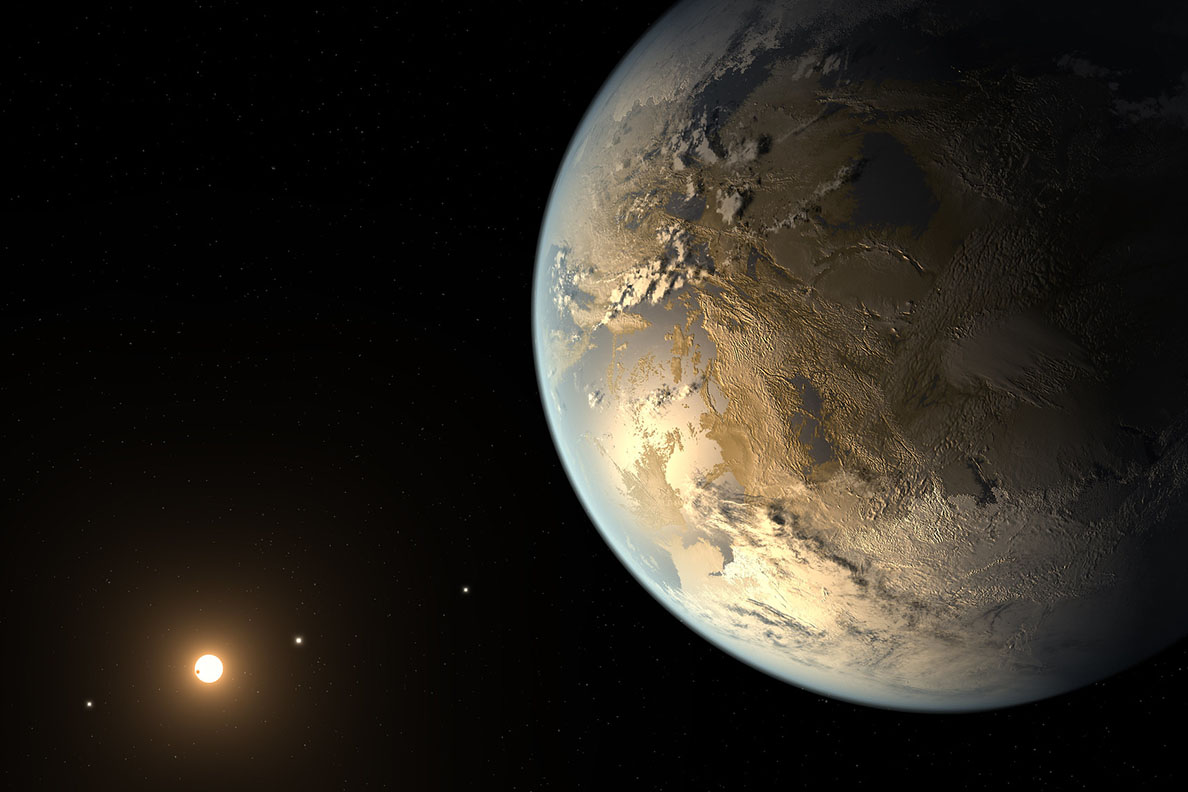Astronomers are searching for the super planet
Again and again, astronomers proudly present exoplanets that would be suitable for life as we know it – i.e. made of solid rock and illuminated by their stars in such a way that water exists on their surface in a liquid state. But is our home planet really ideal for the development of life? After all, when the sun was still young and shone with a third less power, it was still quite cold here until CO2 finally created a greenhouse effect.
A study under the direction of the scientist Dirk Schulze Makuch of the Washington State University and the Technical University of Berlin, which was published recently in the magazine Astrobiology, therefore now describes characteristics of potential «overhabitable» planets, to which also those belong, that are older, somewhat larger, somewhat warmer and possibly more humid than Earth. Life could also more easily flourish on planets orbiting slower changing stars with longer lifetimes than our Sun.
The result is a Top 24 of superplanets that would have to be more suitable for the development of life than Earth. These 24 top candidates are all more than 100 light years away. Above all, however, only a small proportion of them are already confirmed planets. Apart from Kepler-1126 b and Kepler-69 c, they are all «KOIs», which are not Japanese ornamental fish, but «Kepler Objects of Interest», potential objects found by the Kepler mission, which have yet to be confirmed. Of course, the researchers hope that this will be done with future observation missions, e.g. with the James Web space telescope of NASA, the space observatory LUVOIR (NASA, planned) or the space telescope PLATO of ESA (launch 2026).
«With the next space telescopes we will get more information, so it is important to select some targets», says Schulze-Makuch. «We need to focus on specific planets that offer the most promising conditions for complex life. But we have to be careful not to get stuck in the search for a second Earth, because there may be planets that are better suited for life than ours.»
For the study, Schulze-Makuch, a geobiologist with expertise in the habitability of planets, teamed up with astronomers René Heller of the Max Planck Institute for Solar System Research and Edward Guinan of the University of Villanova to identify criteria for overhabitability and search for good candidates among the 4,500 known exoplanets beyond our solar system. Habitability does not mean that there is definitely life on these planets, but only the conditions that would be conducive to life.
From the Kepler exoplanet archive, the researchers selected systems with probably terrestrial planets orbiting within the habitable zone of the host star. Although the Sun is the center of our solar system, it has a relatively short lifetime of less than 10 billion years. Since it took nearly 4 billion years before any form of complex life developed on Earth, many stars similar to our Sun, known as G stars, could run out of fuel before complex life can develop.
In addition to systems with cooler G stars, the researchers also studied systems with K dwarf stars, which are slightly cooler, less massive and less bright than our Sun. K stars have the advantage of a long life span of 20 billion to 70 billion years. This would allow orbiting planets to be older and give life more time to advance to the complexity found on Earth today. To be habitable, however, the planets should not be so old that their inner warmth is exhausted and they lack protective magnetic fields. The earth is about 4.5 billion years old, but researchers argue that the sweet spot for life is a planet that is between 5 and 8 billion years old.
Size and mass also play a role. A planet that is 10% larger than the earth should have more habitable land. A planet that is about 1.5 times the mass of the Earth would be expected to retain its internal warming for longer and also have stronger gravity to maintain an atmosphere for a longer period of time.
Water is the key to life, and the authors argue that a little more of it would help, especially in the form of moisture and clouds. An overall slightly warmer temperature, an average surface temperature of about 5 degrees Celsius more than on earth, together with the extra moisture, would also be better for life. This preference for warmth and humidity is evident on earth with a greater biodiversity in tropical rainforests than in colder, drier areas.
Among the 24 top planet candidates, none meets all the criteria for overhabitable planets, but at least one of them has four of the critical properties, which may make it much more comfortable for life than our home planet.
